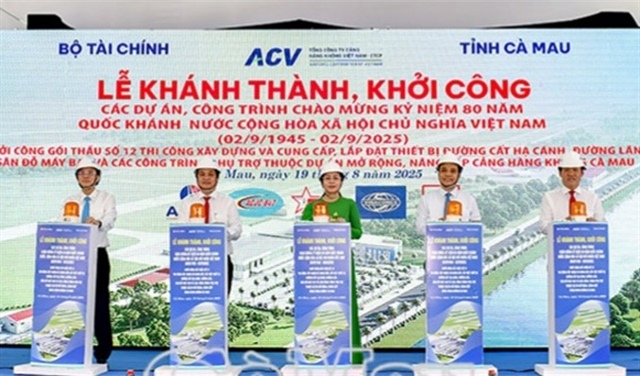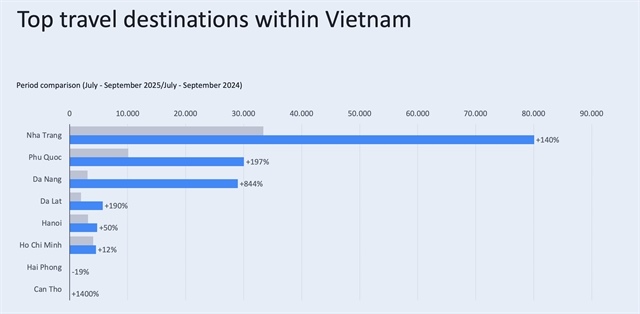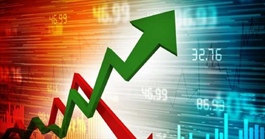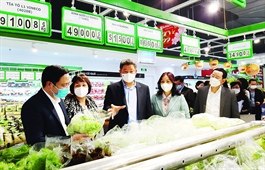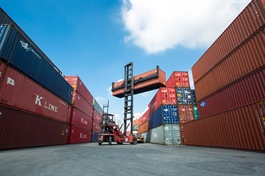Government’s greater efforts to revive the economy
Government’s greater efforts to revive the economy
Vietnam’s strong expansion of its vaccine rollout plan and reopening of international air routes, in addition to a gigantic program on socioeconomic recovery and development, will help its economy to regain robust growth momentum this year.
More than two million doses of Pfizer vaccine arrived in Hanoi last week, bringing the total number of vaccines that the US has supported in Vietnam through the COVAX Program to more than 28.2 million doses.
However, as of late last week, more than 200 million doses have been administered, including 100 percent of those at the age of 18 years old upward, 100 percent for the second shot, and over 40 percent for the third shot, according to the Ministry of Health.
At a meeting organised early this week with international partners for supporting Vietnam in COVID-19 fighting, Prime Minister Pham Minh Chinh, who is also the head of the National Steering Committee for COVID-19 Prevention and Control, said that during the prevention and control process, Vietnam completed COVID-19 prevention and control based on three pillars, which are isolation, testing and treatment; and the 5K message (Masks, Disinfection, Distance, No gathering, Health declaration) plus vaccine, medicine and treatment, technology, people's awareness plus other measures.
“The Vietnamese government has been carrying out a vaccine strategy, including promoting vaccine diplomacy, establishing the COVID-19 vaccine fund; proactively increasing the import, study, and transfer of vaccine production technology; and launching the biggest vaccination campaign so far,” he said.
Over 30 nations have been donating vaccines for Vietnam via the COVAX program, bilateral channels and many other forms.
“All have greatly contributed to supporting Vietnam to effectively deploy the vaccine strategy and the vaccination campaign,” PM Chinh stated. “From a country with a low rate of inoculation, Vietnam has become one of the nations with the highest vaccine coverage rate in the world.”
At present, Vietnam has injected more than 189 million doses of vaccines, with more than 75 million people now fully vaccinated with two doses, and more than 34 million booster shots and third shots administered.
In its diplomatic plan in 2022, Vietnam has placed a big priority on continuing the country’s vaccine diplomacy, with all meetings and talks with leaders of governments and ministries of foreign countries to include the purchase and transfer of vaccine and vaccine production technologies against the COVID-19 pandemic.
“Full inoculation would mean we smooth production and consumption, and effective physical contacts in the society. This will help spur on economic growth,” the PM said.
Australia has delivered 3.6 million Pfizer COVID-19 vaccine doses to Vietnam in the past weeks. The final 2.2 million doses came to Vietnam nearly two weeks ago. This delivery accomplished Australia’s commitment to provide 7.8 million COVID-19 vaccine doses for Vietnam. Besides the Pfizer doses procured via UNICEF, Australia has shared 4.2 million AstraZeneca doses from its own supply with Vietnam since last August.
According to the World Bank, Vietnam’s boosted vaccination has and will help protect people and businesses from woes, helping spur on the country’s economic growth target of 6-6.5 percent for this year.
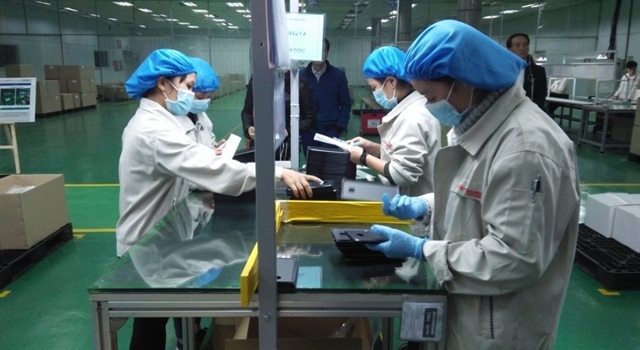
The government is using a raft of sturdy solutions to revitalize the economy and benefit enterprises |
Lifting mobility restrictions
Since March 15, 2022, the Vietnamese government has also lifted some mobility restrictions with a view to revitalising the tourism industry, which has been seriously affected by the health crisis.
The government also issued on the same date a resolution to grant visa exemption of 15 days to citizens from 13 countries including Germany, France, Italy, Spain, the UK and North Ireland, Russia, the Republic of Korea, Japan, Denmark, Sweden, Norway, Finland, and Belarus upon immigration to Vietnam with the temporary resident period of 15 days from the entry date, irrespective of passport types and immigration purposes, on the basis of fulfilment of regulatory requirements prescribed in Vietnam’s laws.
The policy of visa exemption will be applied until end of March 14, 2025. This will be reviewed for renewal in accordance with the Vietnam laws.
In 2019 when COVID-19 had yet occurred, the tourism industry created 9.2 percent or US$24.1 billion of GDP and expanded 22.7 percent during the period of 2015-2019. Vietnam received a record number of more than 18 million foreign visitors in 2019. In 2020 and last year, the number of international arrivals in Vietnam plunged 78.7 and 95.9 percent, respectively, largely due to the pandemic.
Also, Vietnam lifted restrictions on the frequency of regular international flights from February 15 as per the Civil Aviation Authority of Vietnam.
In fact, the government suspended the entry of all foreigners since March 2020, except for diplomats, officials, foreign investors, and experts.
Phan Dung Khanh, general director of the Vietnam National Administration of Tourism (VNAT), said that foreigners can now enter Vietnam by air, land and sea through all border gates as long as they meet the COVID-19 prevention and control requirements.
Before March 15, foreign tourists could only visit Vietnam by air after booking a tour package with a designated travel agency under a vaccine passport program. Despite being offered a quarantine waiver, they were restricted to visit just a few localities with the process strictly monitored.
According to the VNAT and the Ministry of Planning and Investment (MPI), the tourism industry’s revival will help the economy attract more investment which is bouncing back, and ensure its higher economic growth as from this year.
Assistance scheme
On March 16, 2022, PM Chinh signed and promulgated Dispatch No.252/CD-TTg on speeding up the drastic implementation of the program on socioeconomic recovery and development for 2022-2023. This program was launched in January 2022, worth as much as US$15 billion.
The dispatch, the second issued by the PM to direct the implementation of the program, clarified the specific responsibilities of ministries, sectors and localities in realising tasks and solutions set in Resolution No.11 of the Government, the National Assembly's Resolution No.43/2022/QH15 on fiscal and monetary policies supporting the program and the PM’s Dispatch No. 126/CD-TTg.
Under this program, the VAT rate has been pared down from 10 to 8 percent for most sub-sectors, amounting to an expected 0.6 percent (of revised GDP) reduction in VAT receipts. All revenue solutions are to be implemented in 2022. The expenditure component (2.2 percent of revised GDP) is mostly composed of public investments and interest rate subsidies. Public investments (1.6 percent of revised GDP) include accelerating the projects in transport already listed in the Medium-term Public Investment Plan 2021-2025 and new projects in health, education, social protection, employment, digital transformation, tourism, and climate change adaption.
“The bulk of these new investments will be implemented in 2023, and thus may not impact growth substantively in 2022,” said the World Bank in its February bulletin on the Vietnamese situation.
On February 18, 2022, at a seminar organised by the Ministry of Foreign Affairs and Standard Chartered Bank, Edward Lee, who is the chief economist for ASEAN and South Asia at Standard Chartered Bank, said that the Vietnamese economy is predicted to recover vehemently, expanding at 6.7 percent in 2022 and 7 percent in next year.
Tim Leelahaphan, economist for Vietnam and Thailand at Standard Chartered Bank, also hoped that Vietnam will continue being “a key part of the global supply chain as rising wages in China, US-China trade tensions have compelled companies to relocate their production centres out of China or to opt for a China+1 strategy.”
Meanwhile, Singapore-based ASEAN+3 Macroeconomic Research Office (AMRO) has projected that Vietnam’s growth rate may reach about 7.5 percent this year.
At the recent at the Vietnam Business Forum 2022 organised in Hanoi to revive and sustainably develop the economy in the face of adverse impacts from the COVID-19, the foreign business community proposed that for Vietnam to reach higher growth, it needs to accelerate the COVID-19 vaccine inoculation campaign, and continue boosting administrative reforms whose speed remains relatively slow, affecting the economy’s competitiveness.
They also suggested that the Vietnamese government, ministries and local administrations continue facilitating access to information relating to supporting policies and regulations for enterprises and providing them with help to gain easier access to funding to recover production.


